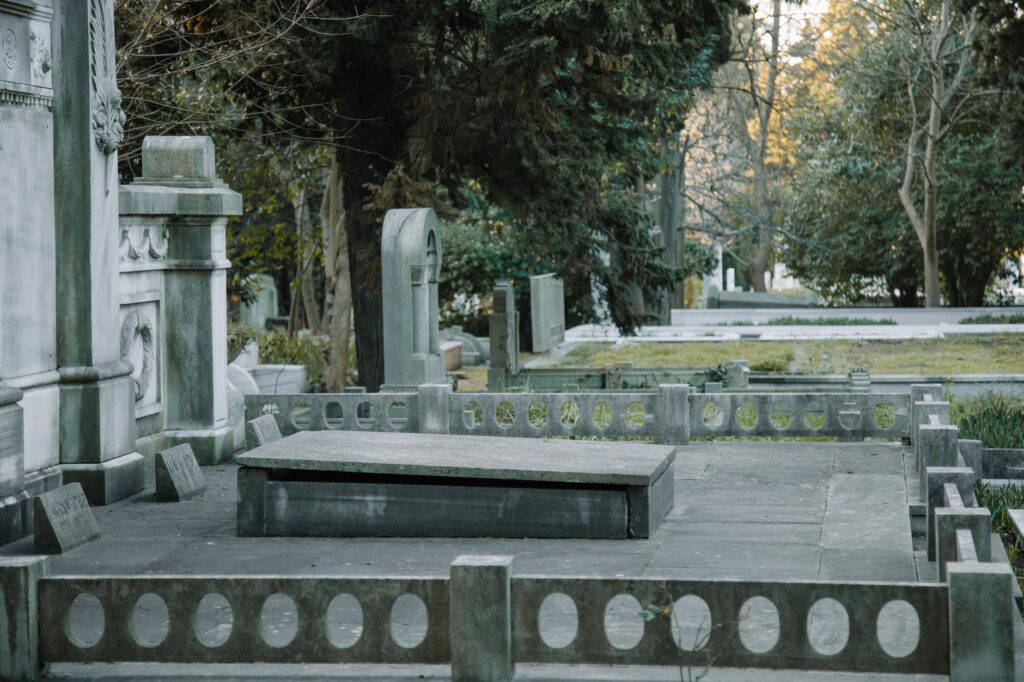That winter, the dead could not be buried.
The ground was frozen, the gravediggers weak from hunger,
The coffin wood was used for fuel. So they were covered with something
And taken on a child’s sled to the cemetery
In the sub-zero air. They lay on the soil,
Some of them wrapped in dark cloth
Bound with rope like the tree’s ball of roots
When it waits to be planted; others wound in sheets,
Their pale, gauze, tapered shapes
Stiff as cocoons that will split down the center
When the new life inside is prepared;
But most lay like corpses, their coverings
Coming undone, naked calves
Hard as corded wood spilling
From under a cloak, a hand reaching out
With no sign of peace, wanting to come back
Even to the bread made of glue and sawdust,
Even to the icy winter, and the siege.P. 1979.
Why could not the dead people be buried?
Note that the poem begins by asking a simple question related to the difficulty of burying the dead in winter 1941. First of all, the ground was covered with snow. So the weather was one great obstacle. Second, the gravediggers (those who dig the graves for the dead) were not well fed. There was not enough food to keep them physically fit and give them the strength required to dig the graves. Third, the wood needed to make the coffins were used as fuel instead to keep the living people warm and alive in very cold temperatures. So the situation was harsh and tough.
How was the dead transported to the cemetery?
On a child’s sled and they were hardly covered or wrapped, which is again indicative of the scarcity of available and required items (such as sheets and cloths) to give a proper burial for the dead corpses.
What is the effect of some of the striking details in the poem (Leningrad Cemetery)?
The detailed picture of the frozen and neglected corpses scattered on the frozen ground stamps on our minds a sense of the horrors and destructiveness of war. Such a striking image of the random, uncounted clutter of bodies is likely to stick in our minds long after finishing our reading of the poem.
Why are the corpses wound in sheets compared to cocoons?
Because cocoons are stiff and hard when touched. But in spite of the dead outer shell, a new life is developing inside. In fact, this new life is bound to come out one day when the outer surface splits open. Similarly, the speaker is suggesting that though the corpses are stiff and hard, a new life is about to come out of them as if he is saying that death and life are interrelated.
What is the point behind comparing the rope with which the corpses are bound to a tree’s ball of rotes?
As it is known, a young tree’s roots are very thin and fragile. Similarly, the rope, which is used to tie the sheets around the corpses, is weak (not strong) and hence likely to get undone. It is only possible for some of the limbs (such as the hand) to dangle loosely from the corpse when the coverings are undone. (Leningrad Cemetery)
What is the significance of the stretching hand? In other words, why does it stretch out?
Though there is no sign of near pace, the gesture of the hand is symbolic. Though the dead cannot speak, they still can gesture to signify their desire to come back to life at any cost. They would be glad to be alive even under the grim conditions and difficult circumstances that attend the living people under siege where they can only feed on bread made of ‘glue and sawdust’, which certainly makes it unpleasant to eat. So the poem’s power lies in expressing a strong desire to live and face life in spite of its harshness and grimness. (Poem: Leningrad Cemetery)




